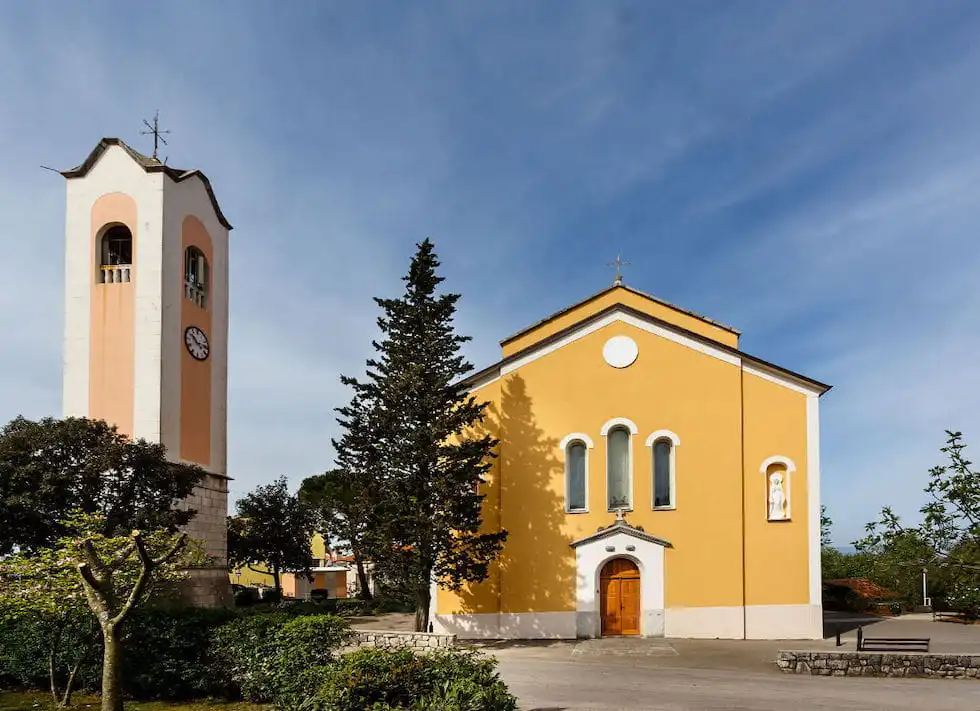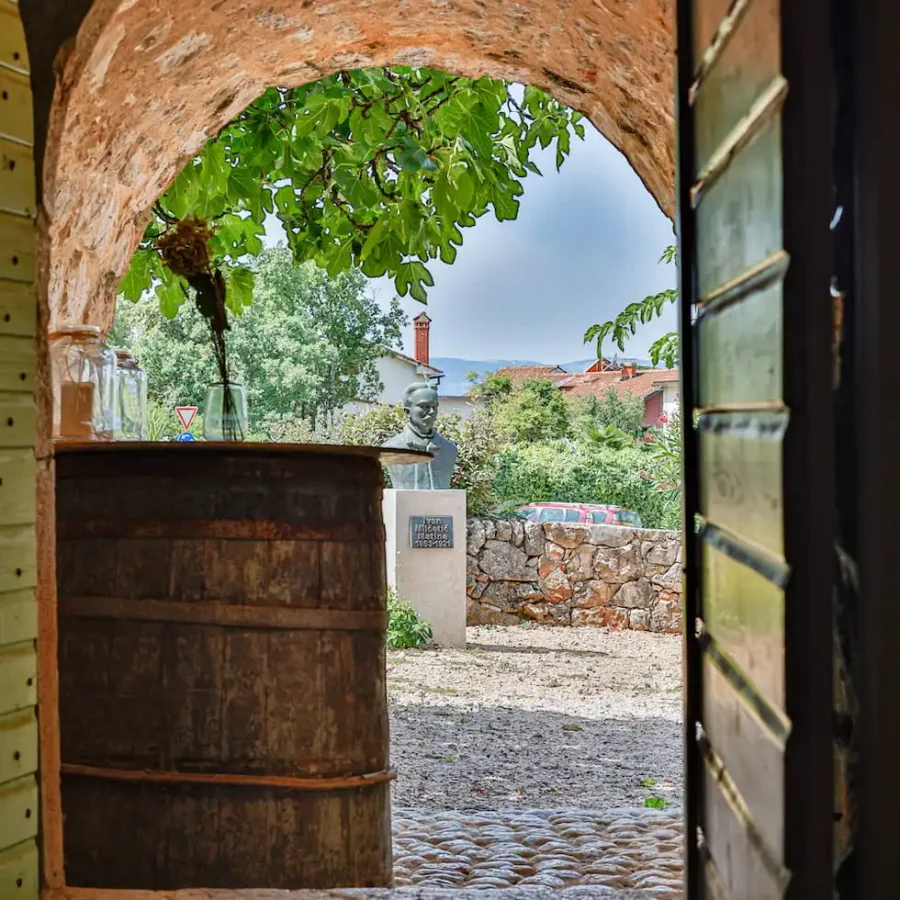4 attractions in Malinska that reveal its impressive history
Table of Contents
Malinska is a picturesque coastal town situated on the western side of the island of Krk in Croatia. It is renowned for its stunning landscapes, rich history, and vibrant cultural heritage. Malinska attracts visitors seeking a perfect blend of relaxation and exploration. Let’s delve into the extensive details of the 4 most popular cultural and historical sights and attractions in Malinska that make this town a captivating destination.
Best attractions in Malinska
1. Archaeological site Cickini: Unlocking the Roman Legacy
The archaeological site Cickini stands as a captivating testament to the rich history of this region. Dating back to the Roman period, this attraction in Malinska has unveiled layers of the past. It offers insights into the lives of those who once inhabited this coastal area.
- Historical Context: The archaeological site Cickini is particularly renowned for its Roman roots. The remnants discovered here point to a thriving settlement, revealing aspects of daily life, trade, and architecture during the Roman era. The archaeological excavations have provided a valuable window into the history of Krk Island. They enhance our understanding of its role in the broader context of the Roman Empire.
- Artifacts and Structures: Excavations have unearthed a variety of artifacts, including pottery, coins, and architectural elements. These findings help archaeologists piece together the puzzle of the ancient community that flourished in this coastal locale. The remains of structures, streets, and public spaces provide a tangible link to the past, allowing visitors to imagine the bustling life of a Roman settlement.
- Ongoing Research and Preservation: Archaeological work at the Cickini site is likely to be ongoing, as researchers continue to delve deeper into the layers of history concealed beneath the earth. Preservation efforts are crucial to safeguarding the uncovered artifacts and structures, ensuring that future generations can continue to explore and learn from this archaeological treasure.

What to expect?
- Visitor Experience: For those drawn to history and archaeology, a visit to this landmark in Malinska offers a unique and immersive experience. Interpretative panels and guided tours may provide context to the excavated remains, allowing visitors to appreciate the significance of the site and the stories it tells about the island’s past.
- Connecting the Dots: The archaeological site Cickini is not only a local treasure but also a piece in the larger mosaic of Roman history. Its findings contribute to our understanding of the cultural, economic, and social dynamics of the region during antiquity.
- Practical Information: Before planning a visit, it is advisable to check with local authorities or archaeological institutions for any visitor guidelines or restrictions. Additionally, local museums may showcase some of the artifacts discovered at the Cickini site, offering a comprehensive view of the archaeological significance of Krk Island.
The archaeological site Cickini is one of the most popular attractions in Malinska. It stands as a fascinating portal to the past. It allows us to explore and appreciate the enduring legacy of the Roman civilization in this picturesque Croatian locale.
2. St. Apollinaris Parish Church: A Testament to Time and Faith
The St. Apollinaris Parish Church is another of Malinska’s attractions. It’s a captivating architectural gem that bears witness to centuries of history and religious devotion. Let’s explore the details of this church, which serves as both a spiritual center and a cultural landmark.
- Historical Roots: The St. Apollinaris Parish Church has deep historical roots, dating back to the 15th century. Its construction reflects the architectural styles of the time, showcasing a blend of Gothic and Renaissance influences. Over the centuries, the church has undergone renovations and modifications, each layer contributing to its unique character.
- Architectural Splendor: One of the most striking features of the church is its architectural splendor. The exterior is adorned with intricate stone carvings, reflecting the craftsmanship of the artisans who contributed to its construction. The facade, with its ornate details, sets the tone for the spiritual and artistic experience that awaits within.
- Interior Treasures: Upon entering the St. Apollinaris Parish Church, visitors are greeted by a serene and contemplative atmosphere. The interior is adorned with religious artworks, including paintings, sculptures, and stained glass windows. The altar, a focal point of reverence, is likely to be a masterpiece of religious artistry.
- Spiritual Significance: Dedicated to St. Apollinaris, the church holds deep spiritual significance for the local community. St. Apollinaris, recognized as a martyr and bishop, is venerated for his role in spreading Christianity. The church serves as a place of worship, reflection, and community gatherings, fostering a connection between the past and present.
- Cultural Heritage: Beyond its religious importance, the St. Apollinaris Parish Church contributes significantly to the cultural heritage of Malinska. It stands as a symbol of the town’s history and the enduring legacy of faith. The church is often a focal point for cultural events and religious celebrations, attracting both locals and visitors alike.

What to expect?
- Visiting Practicalities: For those eager to explore the St. Apollinaris Parish Church, it’s advisable to check for any visitor information, guided tours, or special events. Many churches in the region have adapted to tourism, offering informative materials that guide visitors through the historical and spiritual aspects of the site.
- Surroundings and Views: Situated in the heart of Malinska, the church may offer stunning views of the surrounding landscape. Visitors can take a leisurely stroll around the church grounds, appreciating the charming architecture and absorbing the tranquil ambiance of this historic site.
The St. Apollinaris Parish Church in Malinska stands as a testament to the enduring intersection of faith, history, and art. Whether one is drawn to its architectural beauty, religious significance, or cultural resonance, a visit to this church provides a profound glimpse into the soul of Malinska’s heritage.
3. Malinska Ethnographic Collection: A Tribute to History and Tradition
The Malinska Ethnographic Collection on Krk island in Croatia is a cultural gem and one of the main Malinska attractions. This museum offers a fascinating journey into the region’s rich cultural heritage. It showcases artifacts and exhibits that highlight the traditional way of life on the island.
Highlights of the Ethnographic Collection
- Traditional Tools and Implements: The museum displays a diverse array of traditional tools and implements used by the local community in various aspects of daily life. From farming tools to household items, these exhibits provide insights into the historical practices of the island’s inhabitants.
- Textiles and Clothing: Visitors can explore exhibits featuring traditional textiles and clothing worn by the people of Krk. These items often reflect the unique styles and craftsmanship that have evolved over generations, offering a glimpse into the island’s cultural identity.
- Festive and Ceremonial Artifacts: The collection includes artifacts related to traditional festivals, ceremonies, and religious practices. These items may include costumes, masks, and religious paraphernalia, illustrating the cultural and spiritual dimensions of life on the island.
- Architectural Heritage: The museum may also feature exhibits related to the architectural heritage of the region. Models, photographs, or drawings may depict traditional dwellings, churches, and other structures that contribute to the island’s cultural landscape.

Visitors to the Malinska Ethnographic Collection have the opportunity to appreciate the resilience and creativity of the local community throughout history, gaining a deeper understanding of the cultural tapestry that makes Krk unique.
4. The Franciscan monastery in Porat
Explore the Porat Monastery, one of the main historical attractions in Malinska with roots dating back to the 16th century. The monastery, surrounded by lush greenery, has undergone various transformations throughout the centuries. Visitors can appreciate the architecture and learn about the role the monastery played in the region’s history.
- History: The Chapel of St. Mary Magdalene was located in Porat. Ivan Francopan at the time allowed the settlers to use the chapel until the restoration of the church of Saint Apollinaris was completed. In 1480, the Duke was brought to Venice on pretext, and the Venetian government granted the church to the Third Franciscan Order. In 1557, with the help of local people, the church was restored and the monastery expanded. The monastery was inhabited by Glagolitic Franciscan monks who spent their time praying, cultivating the land, and copying religious books in Glagolitic script. The current appearance of the monastery, with a cloister and a fountain in the middle, dates back to the 17th century. It remains a popular spiritual refuge in the Dubasnica region.
- Interior: The main marble altar was brought from Venice in 1730. Above it is a polyptych of Mary Magdalene, painted before 1557 by Girolamo and Francesco da Santa Croce. The central image shows Mary Magdalene with St. John the Baptist and Holy Pope Gregory. Above it are depicted the Madonna, Saint Francis of Assisi and Saint Quirinus, patron saint of the diocese of Krk. The marble altars on either side are dedicated to Saint Nicholas (marble statues of Saint Nicholas and Saints Peter and Paul) as well as Saint Roch and Sebastian. The centerpiece is an old Gothic crucifix.
- Artifacts: Rare manuscripts of the Glagolitic script are preserved in the monastery’s archives. These include the Žgombić Miscellany from the 16th century, the Sabljić Miscellany from the 17th and 18th century. As well as Hržić Miscellany of the 18th century. Branko Fučić, a native scholar of the region, Glagolitician, art historian and scientist, established a pavilion in the monastery courtyard. It contains the most famous Croatian Glagolitic tablets, such as the Baska Tablet, the Seni Tablet, the Gedosello Tablet, the Krk Inscription and the Varun Tablet, among others.

Malinska on the island of Krk is a destination that seamlessly blends cultural richness, historical significance, and natural beauty. Whether you’re interested in exploring ancient sites, or immersing yourself in local traditions, Malinska attractions offer an enriching and memorable experience.
If you need help booking your accommodation in Malinska, feel free to contact us. And you can find some great options if you visit our selection of accommodation on the island of Krk.